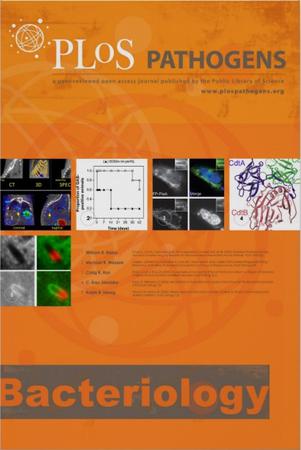Release of P-TEFb from the Super Elongation Complex promotes HIV-1 latency reversal
IF 4.9
1区 医学
Q1 Immunology and Microbiology
引用次数: 0
Abstract
The persistence of HIV-1 in long-lived latent reservoirs during suppressive antiretroviral therapy (ART) remains one of the principal barriers to a functional cure. Blocks to transcriptional elongation play a central role in maintaining the latent state, and several latency reversal strategies focus on the release of positive transcription elongation factor b (P-TEFb) from sequestration by negative regulatory complexes, such as the 7SK complex and BRD4. Another major cellular reservoir of P-TEFb is in Super Elongation Complexes (SECs), which play broad regulatory roles in host gene expression. Still, it is unknown if the release of P-TEFb from SECs is a viable latency reversal strategy. Here, we demonstrate that the SEC is not required for HIV-1 replication in primary CD4+ T cells and that a small molecular inhibitor of the P-TEFb/SEC interaction (termed KL-2) increases viral transcription. KL-2 acts synergistically with other latency reversing agents (LRAs) to reactivate viral transcription in several cell line models of latency in a manner that is, at least in part, dependent on the viral Tat protein. Finally, we demonstrate that KL-2 enhances viral reactivation in peripheral blood mononuclear cells (PBMCs) from people living with HIV (PLWH) on suppressive ART, most notably in combination with inhibitor of apoptosis protein antagonists (IAPi). Taken together, these results suggest that the release of P-TEFb from cellular SECs may be a novel route for HIV-1 latency reactivation.从超级延长复合体中释放 P-TEFb 可促进 HIV-1 潜伏期逆转
在抑制性抗逆转录病毒疗法(ART)期间,HIV-1 在长效潜伏库中的持续存在仍然是功能性治愈的主要障碍之一。转录延伸受阻在维持潜伏状态方面起着核心作用,几种潜伏逆转策略都侧重于释放正转录延伸因子 b(P-TEFb),使其摆脱 7SK 复合物和 BRD4 等负调控复合物的封存。P-TEFb 的另一个主要细胞储库是超级延伸复合体(SEC),它们在宿主基因表达中发挥着广泛的调控作用。然而,从 SECs 中释放 P-TEFb 是否是一种可行的潜伏逆转策略还不得而知。在这里,我们证明原代 CD4+ T 细胞中的 HIV-1 复制不需要 SEC,而且 P-TEFb/SEC 相互作用的小分子抑制剂(称为 KL-2)会增加病毒转录。KL-2 与其他潜伏期逆转剂(LRAs)协同作用,在几种潜伏期细胞系模型中重新激活病毒转录,其方式至少部分依赖于病毒 Tat 蛋白。最后,我们证明了 KL-2 能增强接受抑制性抗逆转录病毒疗法的艾滋病病毒感染者(PLWH)外周血单核细胞(PBMC)中的病毒再活化,尤其是与凋亡抑制蛋白拮抗剂(IAPi)联合使用时。综上所述,这些结果表明,P-TEFb 从细胞 SEC 中的释放可能是 HIV-1 潜伏期重新激活的新途径。
本文章由计算机程序翻译,如有差异,请以英文原文为准。
求助全文
约1分钟内获得全文
求助全文
来源期刊

PLoS Pathogens
生物-病毒学
CiteScore
11.40
自引率
3.00%
发文量
598
审稿时长
2 months
期刊介绍:
Bacteria, fungi, parasites, prions and viruses cause a plethora of diseases that have important medical, agricultural, and economic consequences. Moreover, the study of microbes continues to provide novel insights into such fundamental processes as the molecular basis of cellular and organismal function.
 求助内容:
求助内容: 应助结果提醒方式:
应助结果提醒方式:


